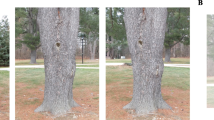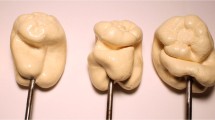Abstract
When an object moves, it covers and uncovers texture in the background. This pattern of change is sufficient to define the object’s shape, velocity, relative depth, and degree of transparency, a process called Spatiotemporal Boundary Formation (SBF). We recently proposed a mathematical framework for SBF, where texture transformations are used to recover local edge segments, estimate the figure’s velocity and then reconstruct its shape. The model predicts that SBF should be sensitive to spatiotemporal noise, since the spurious transformations will lead to the recovery of incorrect edge orientations. Here we tested this prediction by adding a patch of dynamic noise (either directly over the figure or a fixed distance away from it). Shape recognition performance in humans decreased to chance levels when noise was placed over the figure but was not affected by noise far away. These results confirm the model’s prediction and also imply that SBF is a local process.
Access this chapter
Tax calculation will be finalised at checkout
Purchases are for personal use only
Preview
Unable to display preview. Download preview PDF.
Similar content being viewed by others
References
Gibson, J.J., Kaplan, G.A., Reynolds Jr., H.N., Wheeler, K.: The change from visible to invisible: A study of optical transitions. Perception & Psychophysics 5, 113–116 (1969)
Shipley, T.F., Cunningham, D.W.: Perception of occluding and occluded objects over time: Spatiotemporal segmentation and unit formation. In: Shipley, T.F., Kellman, P.J. (eds.) From fragments to objects: Segmentation and grouping in vision, pp. 557–585. Elsevier Science, Oxford (2001)
Shipley, T.F., Kellman, P.J.: Optical tearing in spatiotemporal boundary formation: When do local element motions produce boundaries, form, and global motion? Spatial Vision: Special Issue: In honor of Bela Julesz 7, 323–339 (1993)
Shipley, T.F., Kellman, P.J.: Spatiotemporal boundary formation: Boundary, form, and motion perception from transformations of surface elements. Journal of Experimental Psychology: General 123, 3–20 (1994)
Shipley, T.F., Kellman, P.J.: Spatiotemporal boundary formation: The role of local motion signals in boundary perception. Vision Research 37, 1281–1293 (1997)
Cunningham, D.W., Graf, A.B.A., Bülthoff, H.H.: A relative encoding approach to modelling spatiotemporal boundary formation. Journal of Vision, VSS Abstract, 120 (2002)
Cunningham, D.W., Graf, A.B.A., Cooke, T., Wallraven, C., Bülthoff, H.H.: The perception of objects from dynamic occlusion: A relative encoding implementation. under review (2004)
Cooke, T., Cunningham, D.W., Wallraven, C.: Local processing in spatiotemporal boundary formation. In: Proceedings of the 7th Tübingen Perception Conference, p. 65 (2004)
Grossberg, S., Mingolla, E.: Neural dynamics of form perception: Boundary completion, illusory figures, and neon color spreading. Psychological Review 92, 173–211 (1985)
Shipley, T.F., Kellman, P.J.: Boundary completion in illusory contours: Interpolation or extrapolation? Perception 32, 985–999 (2003)
Williams, L.R., Jacobs, D.W.: Stochastic completion fields: A neural model of illusory contour shape and salience. Neural Computation 9(4), 837–858 (1997)
Cunningham, D.W., Shipley, T.F., Kellman, P.J.: Interactions between spatial and spatiotemporal information in spatiotemporal boundary formation. Perception & Psychophysics 60, 839–851 (1998)
Wallach, H.: Über visuell warhgenomme bewegungsrichtung. Psychologische Forshcung 20, 325–380 (1935)
Cunningham, D.W., Shipley, T.F., Kellman, P.J.: The dynamic specification of surfaces and boundaries. Perception 27, 403–416 (1998)
Author information
Authors and Affiliations
Editor information
Editors and Affiliations
Rights and permissions
Copyright information
© 2004 Springer-Verlag Berlin Heidelberg
About this paper
Cite this paper
Cooke, T., Cunningham, D.W., Bülthoff, H.H. (2004). The Perceptual Influence of Spatiotemporal Noise on the Reconstruction of Shape from Dynamic Occlusion. In: Rasmussen, C.E., Bülthoff, H.H., Schölkopf, B., Giese, M.A. (eds) Pattern Recognition. DAGM 2004. Lecture Notes in Computer Science, vol 3175. Springer, Berlin, Heidelberg. https://doi.org/10.1007/978-3-540-28649-3_50
Download citation
DOI: https://doi.org/10.1007/978-3-540-28649-3_50
Publisher Name: Springer, Berlin, Heidelberg
Print ISBN: 978-3-540-22945-2
Online ISBN: 978-3-540-28649-3
eBook Packages: Springer Book Archive




